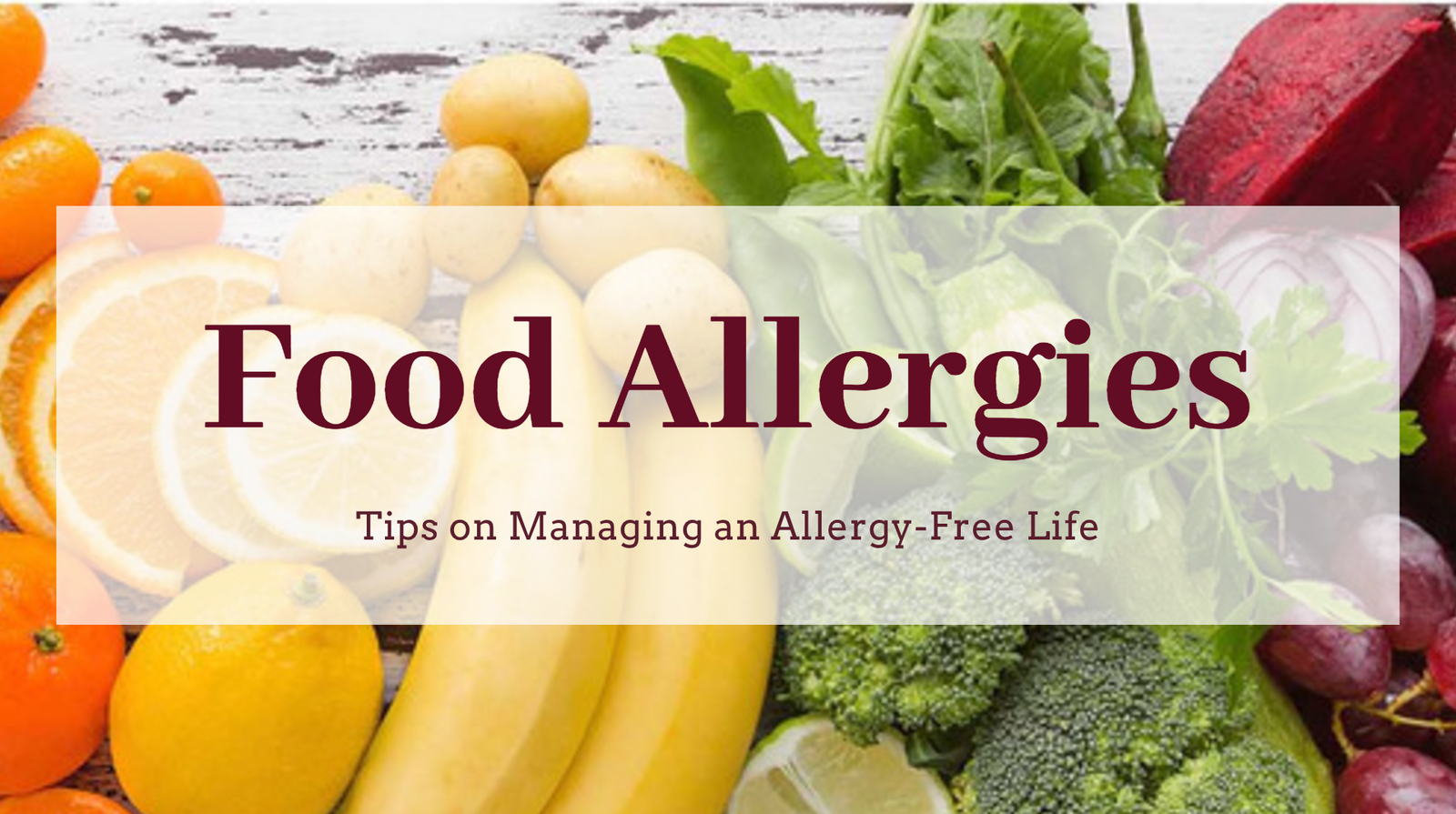For people with food allergies, trying to maintain normalcy while avoiding contact with allergens can be incredibly hard. Here are some basics on the condition, plus some helpful tips on managing food allergies in your daily life!

Perhaps you’re reading this post because you or a loved one are one of the 32 million people in the US currently living with food allergies and know just how difficult they are to navigate. [1] We’re here to give you an overview of food allergy basics as well as some helpful tips on managing the food allergies in your life.
What Is a Food Allergy?
Why do some people have food allergies while others don’t? A food allergy occurs when the body’s immune system overreacts to harmless food proteins, marking them as a “threat.” [2] It then tries to combat this imaginary “threat” by creating antibodies that alert a person’s allergy cells to produce histamines. Histamines are the chemicals that try to rid the body of dangerous substances. [3] This chain of events ultimately leads to an allergic reaction.[4]
Top 8 Most Common Food Allergens
Although there are over 170 different known food allergens, eight food allergens in particular are responsible for causing 90% of reported allergic reactions: [5]
Top 8 Food Allergens:

Symptoms
Food allergy symptoms can vary from mild itching and sneezing to life-threatening reactions, like asthma and anaphylaxis. Here are key symptoms to look out for:
Common Symptoms:[6]

How to Manage an Allergy-Free Life
When dealing with a serious health condition like allergies, the best course of action is to consult your doctor. He/she can assess your particular situation and provide treatment recommendations accordingly. Nevertheless, here are some general tips that can also help as you learn to manage your food allergies.
- Let people know you have food allergies : Let friends, family, co-workers, classmates, or anyone you come into daily contact with about your allergies. This way they’ll know to avoid your allergens and to look for reaction symptoms in the case of an emergency.
- Carry epinephrine : Due to the life-threatening danger of allergic reactions, you should consult with your doctor about carrying an epinephrine pen with you. When taken quickly after allergen exposure, it can lessen the effects of anaphylactic reaction and give you more time to contact emergency services. [7]
- Avoid contact with foods you are allergic to : Avoiding your allergens is the only way to completely eliminate the chance of a serious reaction. If you haven’t prepared the food you’re eating yourself, make sure to inquire about the ingredients, food preparation methods, and cleaning routines.
Carrying around a card that informs restaurants about what foods you are allergic to is also advised. Here is a link to the FARE organization’s printable cards.
- Look for allergy-friendly foods : When buying prepared foods and snacks, read the back label to see if the product is made in a plant that also produces products with your allergens. It’s best to find foods that are made in their own top eight-free facility, like That’s it.
What to look for in Food Labels
All packaged foods sold in the US are required to clearly state whether the product’s ingredients include any top allergens or proteins derived from allergens. However, if an “allergen-free” food is manufactured in a factory that also produces foods with allergens (like nuts), traces of the allergens can accidentally be incorporated into the product during the manufacturing process. This is an incredibly important detail because small traces of allergens from cross-contact or cross-contamination can cause a serious reaction. [8] Companies are not obligated to disclose accidental contamination but many willingly state whether their factories process top eight allergens. [9]
All That’s it. allergy-friendly fruit snacks are free from the top eight food allergens and are made in a facility that does not process: peanuts, tree nuts (except for coconut, which is an uncommon allergen), dairy products, eggs, soy, wheat, crustaceans, or fish. They are the perfect worry-free snack choice for both kids and adults with allergies.
[1] https://www.foodallergy.org/life-with-food-allergies/food-allergy-101/facts-and-statistics
[2] https://www.foodallergy.org/life-with-food-allergies/food-allergy-101/what-is-a-food-allergy
[3] https://www.webmd.com/allergies/what-are-histamines#1
[4] https://farrp.unl.edu/resources/gi-fas/fas/food-allergy-basics
[5] https://www.ncbi.nlm.nih.gov/pmc/articles/PMC3551706/
[6] https://acaai.org/allergies/types/food-allergy
[7] https://acaai.org/allergies/allergy-treatment/epinephrine-auto-injector
[8] https://www.foodallergy.org/life-with-food-allergies/living-well-everyday/avoiding-cross-contact
[9] https://www.mayoclinic.org/diseases-conditions/food-allergy/in-depth/food-allergies/art-20045949
Shop Allergy-Friendly That's it. Now!

